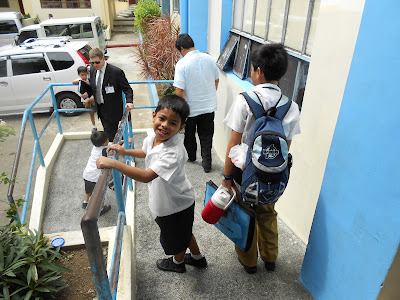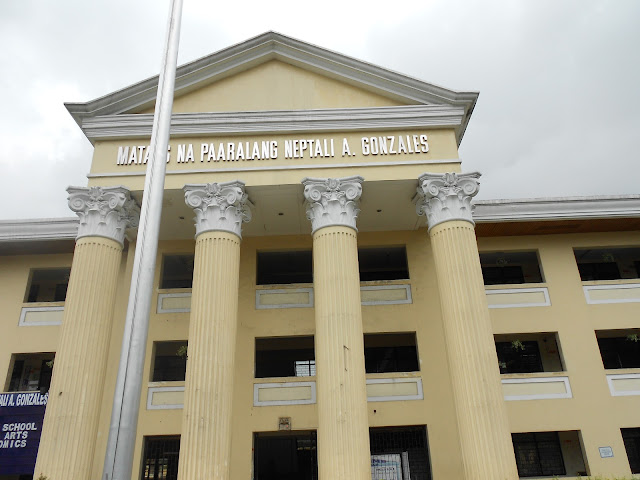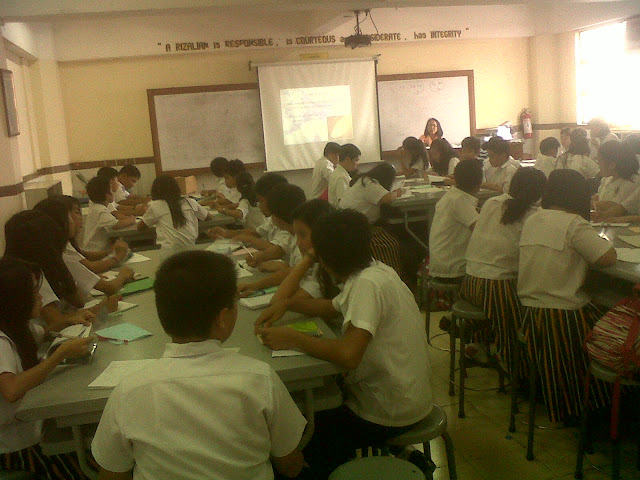"Parents in the Philippines are wholly focused on their children getting a College degree."
I am in a cab driving to Manila airport. It's now become my habit to quiz taxi drivers about their children in whichever country I'm in. By asking after their children I generally can dig deeper into what kind of school they attend, where they might go after school, what the impressions are of the teachers etc. It all adds colour to my understanding of local education conditions and how the primary purchaser (a parent) perceives the product (schooling).
Ray is my chatty, smiley driver tonight (I think almost every Filipino I've met this week has beamed with smiles - a delightful phenomenon that is quite unusual after London). I estimate Ray is in his late forties. The nuggets he tells me are assembling into a narrative that I suspect is typical for many millions of Filipinos. Ray's story then goes as follows.
Ray was born in the rural Provinces. His father (now passed away) was a farmer who hadn't attended school. Ray himself went to primary school and left after grade six. Ray took a conscious decision as a young man to migrate to the capital city to increase his earnings power. As far as I can gather Ray's last formal involvement with education was the driving license test he took in 1988 just before he first started driving his cab.
Ray and his wife have three children: two sons, and the youngest, a daughter. All three are currently attending college (or have just graduated). The children are studying Information Technology, Business Management and Computer Science at a public university in Manila. The eldest son has just begun a job at a call centre. "The pay when you start is OK, around 17,000 pesos per month (c.USD $400), it but gets better as you stay," says Ray, "it's tough for him since he sometimes begins work at 3am, and sometimes at 1pm." Ray appears, quite rightly, quietly proud of his son's employment and the prospects now open to his other two kids. One of them is already earning, I estimate, 3-4 times more than his father.
Ray's children have achieved what I believe some social development geeks call Single Generation Transformation. From rural farming grandparents, via Ray's urban migration and serious hard graft, the grandchildren are all now college educated and ready for skilled employment within the service industries. Education has clearly been a major driver in bringing about this transformation - a free public school system, a fast growing economy, huge parental sacrifice and constant pressure on the kids to strive for self-improvement are all wrapped up in this. This is what it means I suppose to move from "low income" country status to a "middle income" category. I wonder how long Ray's kids will remain working within Manila, before the lure of Hong Kong, Dubai, or Korea takes them abroad like so many of their compatriots (someone told me this week that 15% of the Philippines' total GDP derives from remittances sent by overseas workers).
When I ask Ray about his experiences of schooling his children, he tells me that "of course I am a driver and my children went to government school. Private schools here are very expensive - 50,000 pesos per semester." Interestingly, when quizzed about what kinds of quality standards his children's school exhibited, Ray shrugs his shoulders and says non-committally "it's OK." It occurs to me that my question is somewhat crass; when free government provision is all that is within reach, there is no real choice over quality standards.
The other interesting nugget is that even government schooling isn't totally free. Ray says "miscellaneous fees cost about 5,000 pesos a year...my son took a jeepney (public bus) every morning and afternoon to school and back, that's 30 pesos per day, plus text books and materials."
When I ask Ray about whether he's ever thought about pursuing any further studies for himself he laughs it off, "life is tough, I must drive."
When I ask Ray about whether he ever thinks about returning to his family home in the Provinces, he pauses; "yes, maybe I will, when all the children are taken care of and have good jobs. There is no money in the Provinces, but I can farm." I can't tell if it's my romanticising temperament or something genuinely felt by Ray, but I think I detect a hint of nostalgia flicker in Ray's eyes as he utters this. Work and family may have become so all-absorbing for Ray these last two decades there may have been little time to consider his own future plans. We have now arrived at the Departures drop-off zone and it's time for me to get out. I realise I haven't taken a picture of Ray to include with this post, and now wish I had. I will make sure I take photos of any other taxi drivers I happen to write about in future.
I am in a cab driving to Manila airport. It's now become my habit to quiz taxi drivers about their children in whichever country I'm in. By asking after their children I generally can dig deeper into what kind of school they attend, where they might go after school, what the impressions are of the teachers etc. It all adds colour to my understanding of local education conditions and how the primary purchaser (a parent) perceives the product (schooling).
Ray is my chatty, smiley driver tonight (I think almost every Filipino I've met this week has beamed with smiles - a delightful phenomenon that is quite unusual after London). I estimate Ray is in his late forties. The nuggets he tells me are assembling into a narrative that I suspect is typical for many millions of Filipinos. Ray's story then goes as follows.
Ray was born in the rural Provinces. His father (now passed away) was a farmer who hadn't attended school. Ray himself went to primary school and left after grade six. Ray took a conscious decision as a young man to migrate to the capital city to increase his earnings power. As far as I can gather Ray's last formal involvement with education was the driving license test he took in 1988 just before he first started driving his cab.
Ray and his wife have three children: two sons, and the youngest, a daughter. All three are currently attending college (or have just graduated). The children are studying Information Technology, Business Management and Computer Science at a public university in Manila. The eldest son has just begun a job at a call centre. "The pay when you start is OK, around 17,000 pesos per month (c.USD $400), it but gets better as you stay," says Ray, "it's tough for him since he sometimes begins work at 3am, and sometimes at 1pm." Ray appears, quite rightly, quietly proud of his son's employment and the prospects now open to his other two kids. One of them is already earning, I estimate, 3-4 times more than his father.
Ray's children have achieved what I believe some social development geeks call Single Generation Transformation. From rural farming grandparents, via Ray's urban migration and serious hard graft, the grandchildren are all now college educated and ready for skilled employment within the service industries. Education has clearly been a major driver in bringing about this transformation - a free public school system, a fast growing economy, huge parental sacrifice and constant pressure on the kids to strive for self-improvement are all wrapped up in this. This is what it means I suppose to move from "low income" country status to a "middle income" category. I wonder how long Ray's kids will remain working within Manila, before the lure of Hong Kong, Dubai, or Korea takes them abroad like so many of their compatriots (someone told me this week that 15% of the Philippines' total GDP derives from remittances sent by overseas workers).
When I ask Ray about his experiences of schooling his children, he tells me that "of course I am a driver and my children went to government school. Private schools here are very expensive - 50,000 pesos per semester." Interestingly, when quizzed about what kinds of quality standards his children's school exhibited, Ray shrugs his shoulders and says non-committally "it's OK." It occurs to me that my question is somewhat crass; when free government provision is all that is within reach, there is no real choice over quality standards.
The other interesting nugget is that even government schooling isn't totally free. Ray says "miscellaneous fees cost about 5,000 pesos a year...my son took a jeepney (public bus) every morning and afternoon to school and back, that's 30 pesos per day, plus text books and materials."
When I ask Ray about whether he's ever thought about pursuing any further studies for himself he laughs it off, "life is tough, I must drive."
When I ask Ray about whether he ever thinks about returning to his family home in the Provinces, he pauses; "yes, maybe I will, when all the children are taken care of and have good jobs. There is no money in the Provinces, but I can farm." I can't tell if it's my romanticising temperament or something genuinely felt by Ray, but I think I detect a hint of nostalgia flicker in Ray's eyes as he utters this. Work and family may have become so all-absorbing for Ray these last two decades there may have been little time to consider his own future plans. We have now arrived at the Departures drop-off zone and it's time for me to get out. I realise I haven't taken a picture of Ray to include with this post, and now wish I had. I will make sure I take photos of any other taxi drivers I happen to write about in future.










































